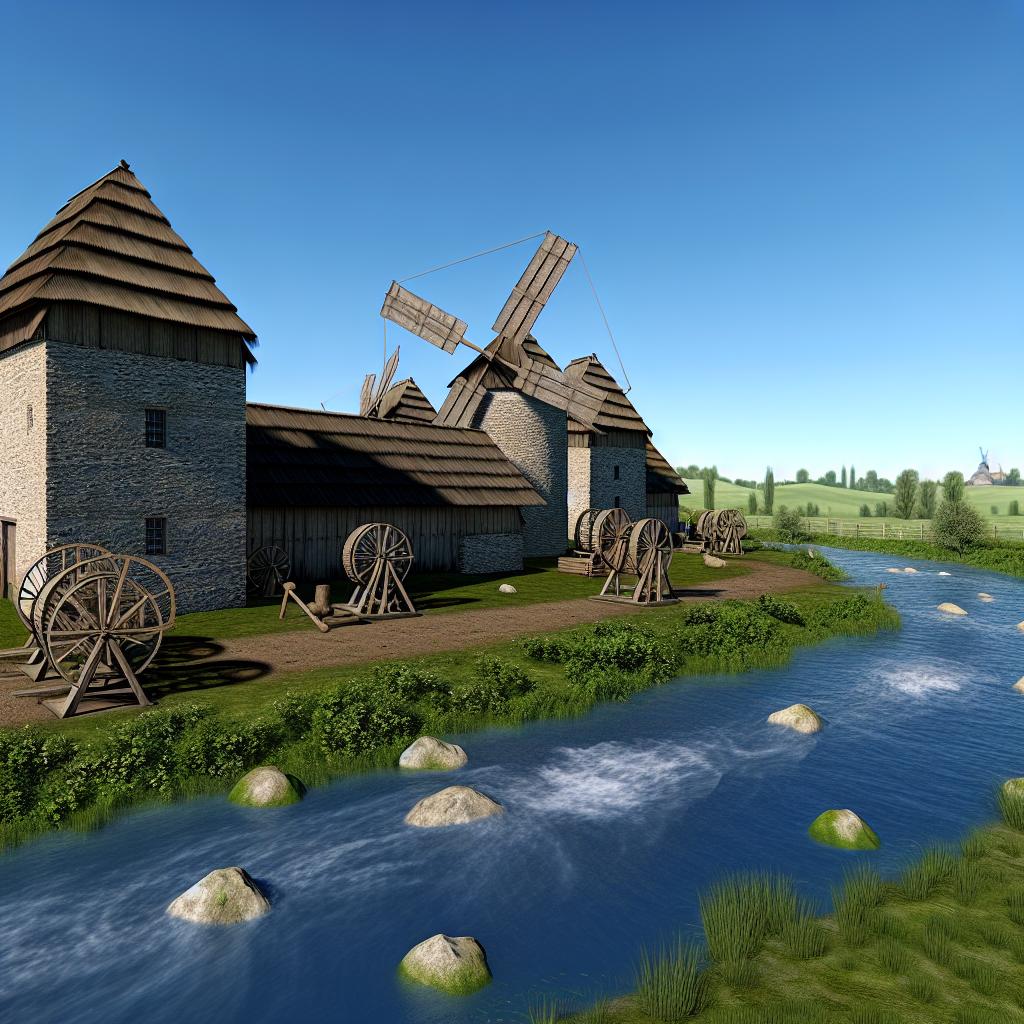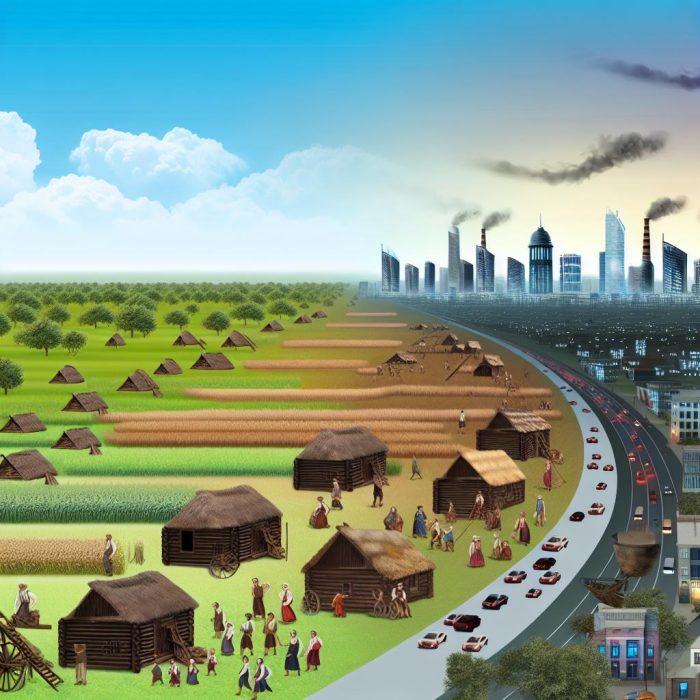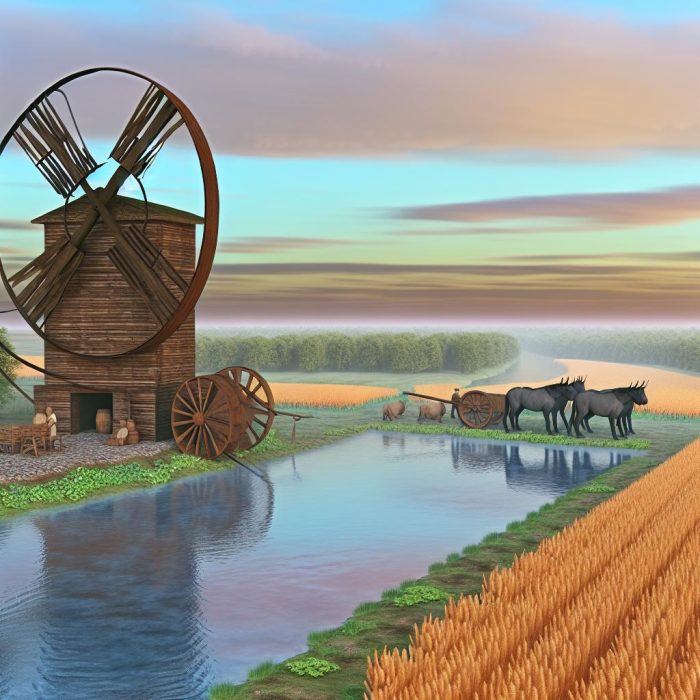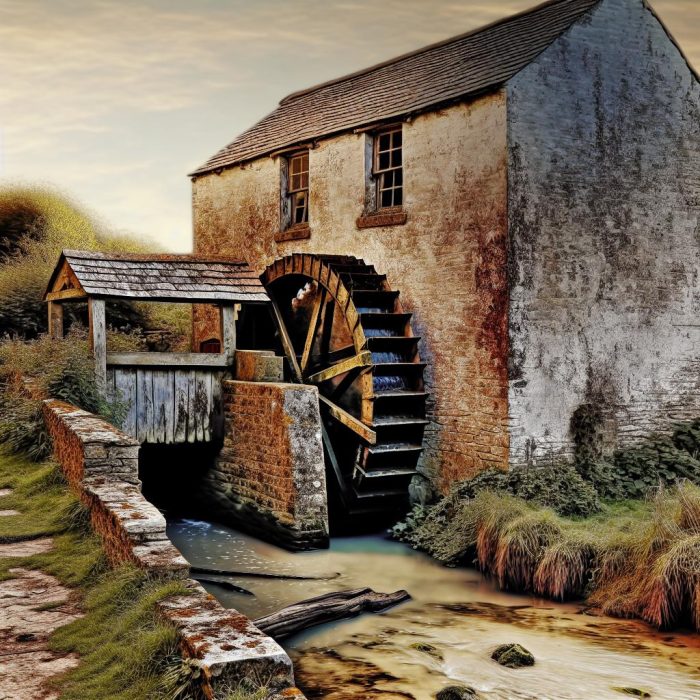The Role of Mills in Medieval Europe
During the medieval period, mills were a critical component of the agricultural and industrial landscape in Europe. They played a pivotal role in both the economic and social life of the time. Mills were primarily used for grinding grain into flour, but they also served other purposes such as cutting timber and fulling cloth.
Evolution and Types of Mills
Medieval mills evolved significantly over the centuries. Initially, the earliest mills were simple stone constructions powered by human or animal labor, such as the hand-quern and animal mill. These early devices were labor-intensive, relying heavily on manual effort for operation. The simplicity of these mills meant that a large workforce was necessary just to produce small quantities of ground grain, which in turn limited their use and efficiency.
However, the true transformation came with the advent of water mills and windmills. This shift not only changed the face of milling but also marked a significant step in technological advancement during this era.
Watermills became widespread due to their efficiency and reliability. They relied on the kinetic energy of flowing water, usually from rivers or streams, to turn large wheels which powered the grinding mechanisms. This change allowed for greater productivity as the mills could operate continuously and with less human effort compared to their earlier counterparts. Additionally, the geographical placement of these mills near water sources also helped in the transportation of flour to nearby markets and villages. For more information on the historical development of watermills, you can visit this resource.
The introduction of windmills in the 12th century, especially in regions where water power was not readily accessible, further broadened the use of mills. Windmills harness the power of the wind by using large sails, providing an alternative means of powering milling operations. Their design and utility varied greatly across regions, adapting to local wind conditions. The adaptability of windmills made them a common sight in less water-abundant areas and added to the mechanics of wind energy utilization, which was a novel concept at the time.
Economic Impact
The economic impact of mills in medieval Europe was indisputable. Mills were essential to the medieval economy as they increased the efficiency of grain production, which was a staple food. By mechanizing the labor-intensive process of grinding grain, mills allowed for the production of larger quantities of flour with less human labor, contributing to the growth of population centers and urbanization.
This increase in flour production meant that food supplies could better meet the demands of growing populations. The production surplus supported larger urban centers and, as a result, stimulated regional trade as flour could be distributed more widely. The proliferation of mills also encouraged the development of other related industries that dealt in goods requiring milling, such as bakery and brewing, thus creating a ripple effect that stimulated economic growth in connected sectors.
Moreover, the operation of mills was a source of income for many lords and monasteries, who would often control mill rights within their territories. Peasants were typically required to pay fees to use the mill, either in the form of grain or as part of tenant obligations. This arrangement helped sustain the feudal economy and provided an income stream that funded the maintenance of the manorial system and allowed for the expansion of church lands.
Social and Cultural Significance
Aside from their economic importance, mills also held social and cultural significance. They often became focal points of communities, situated strategically in villages and along important trade routes. The mill was not just a place of labor but also a gathering spot where information and news could be exchanged. This communal aspect of mills made them key sites for social interaction.
The legal right to operate a mill was a significant aspect of feudal law, often leading to disputes. The control of mill operations signified power and influence within the community. Mills symbolized technological progress and mastery over natural forces, embodying both economic power and social authority. This authority, however, was not without contention as disputes over water rights and mill privileges were common, reflecting the integral position mills occupied in society.
Culturally, mills were often featured in literature, folklore, and art, which underscored their place in the everyday life of medieval people. This cultural presence further emphasizes the mill’s role beyond its economic function, capturing the imagination of the time and indicating the deep ties between technology and society.
Technological Innovations and Legacy
Technological improvements continued throughout the medieval period, with innovations like the cam and wheel gearing systems enhancing the efficiency of mills. These improvements not only made mills more efficient but also paved the way for subsequent technological advancements by demonstrating the possibilities of mechanical engineering in agricultural and industrial processes.
This innovation laid the groundwork for more advanced machinery in later centuries, heralding the transition to the Industrial Revolution. The mechanization principles developed and refined in medieval mills were foundational, subsequently adapted and evolved to power a range of machinery that fueled industrial developments across Europe and beyond.
Despite their ancient origins, the principles behind medieval mills can still be observed in modern turbine and engine designs. The basic concept of using natural energy sources to perform labor-intensive tasks endures, visible today in both cutting-edge green technologies and traditional mechanical systems. For those interested in the technical aspects and historical impact of medieval milling technology, additional resources can be found at millingtechnologyhistory.com.
In conclusion, mills in medieval Europe were more than simple machines for processing grain; they were vital engines of economic activity, social interaction, and technological progress. Their legacy continues to influence engineering and society to this day, illustrating their lasting impact on both local communities and broader technological developments. The evolution from rudimentary milling methods to sophisticated water and windmills marked a pivotal journey in human ingenuity and adaptation, forming a bridge between the ancient world and the modern mechanical age.



